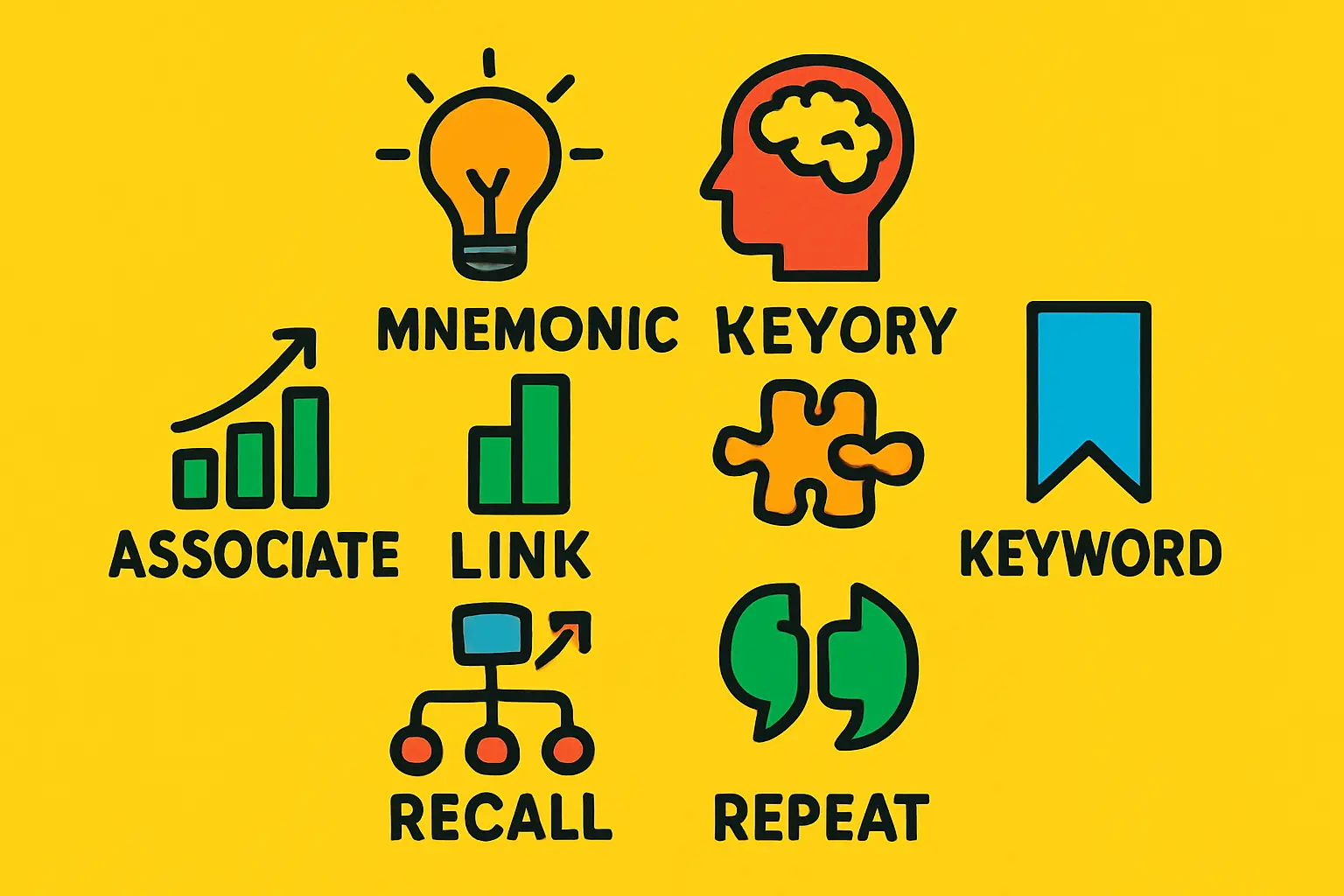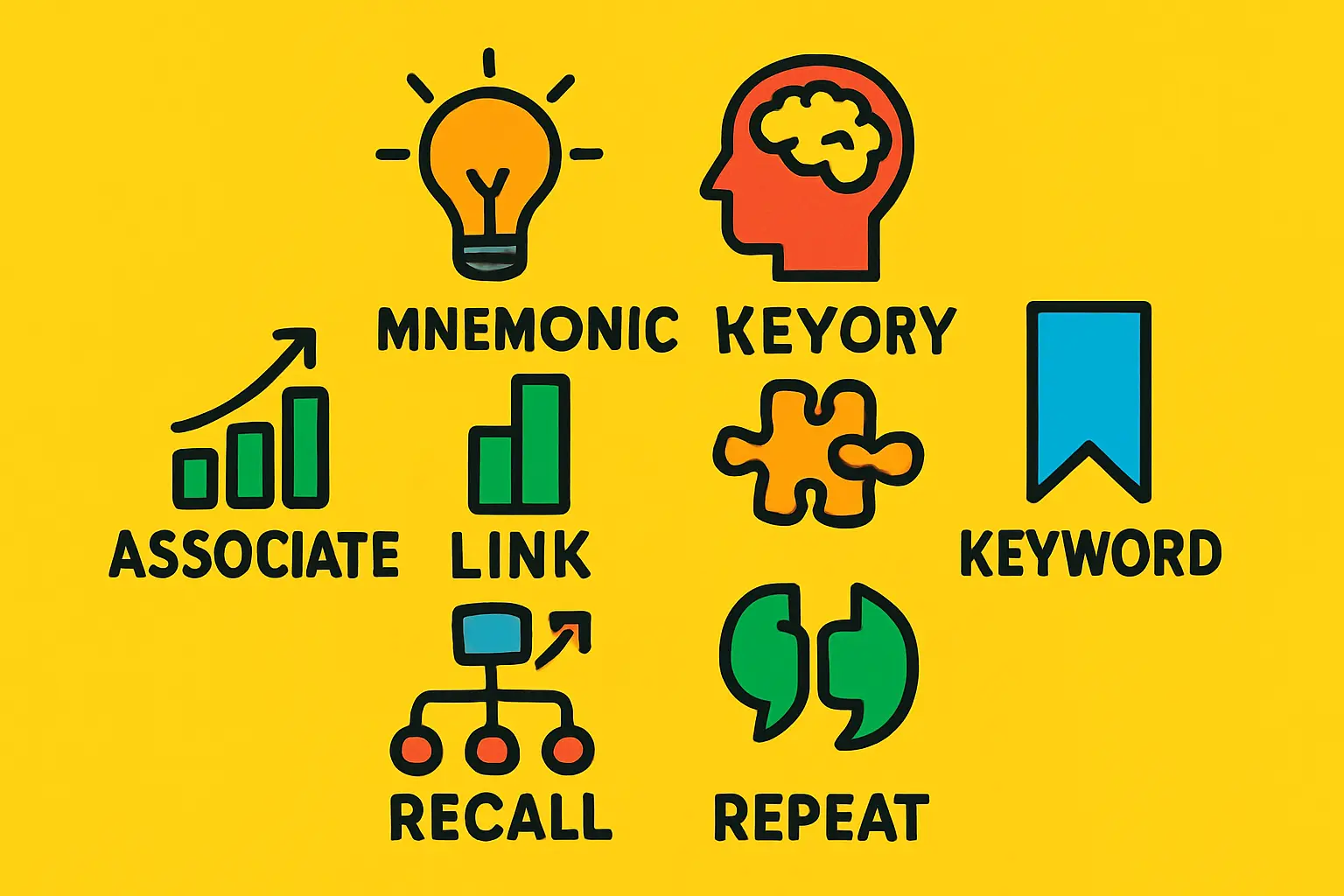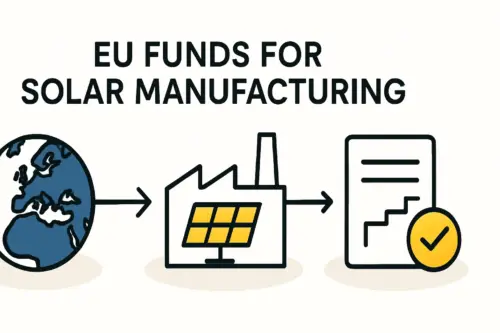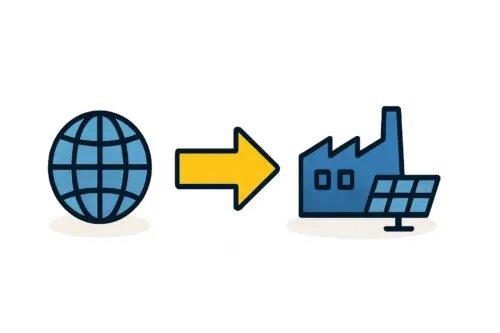Investors considering Lithuania for a new solar module factory are often drawn by its strategic EU location, skilled workforce, and commitment to renewable energy. The success of such a venture, however, depends as much on mastering the local regulatory landscape as it does on market dynamics or technology.
For many international entrepreneurs, the environmental permitting process can be a formidable administrative challenge. Understanding this process from the outset is no mere formality—it is a critical step in project planning that can prevent significant delays and unforeseen costs.
This guide provides a structured overview of the environmental permits required to establish a solar module factory in Lithuania. It outlines the key stages, authorities, and timelines, offering a practical framework for professionals entering this sector.
Understanding the Core Requirement: The Environmental Impact Assessment (EIA)
The Environmental Impact Assessment (EIA) is at the heart of Lithuania’s environmental legislation, which is harmonized with European Union directives. The purpose of an EIA is to identify, predict, and evaluate the potential environmental effects of a proposed industrial project before major decisions are made. For a solar module factory, this involves assessing everything from raw material sourcing and water usage to waste streams and air emissions.
The process is managed by Lithuania’s Environmental Protection Agency (EPA), which serves as the primary authority for reviewing applications and issuing decisions. A successful EIA is the gateway to obtaining the permits required to build and operate.
The EIA Process in Lithuania: A Step-by-Step Guide
The EIA procedure is methodical and transparent, designed to ensure that all potential impacts are thoroughly considered. It typically unfolds in four distinct stages.
Step 1: EIA Screening – Is a Full Assessment Necessary?
Not every project requires a full EIA. The first step is a screening process to determine if an assessment is needed. According to Lithuanian law, a mandatory EIA is required for solar module production facilities with a planned manufacturing capacity exceeding 100 megawatts (MW) per year.
For projects below this threshold, the developer must still submit information to the EPA, which will decide if a full EIA is warranted based on the project’s location, scale, and potential environmental sensitivity. This initial decision is typically delivered by the EPA within 30 working days.
Step 2: Scoping – Defining the Boundaries of the Assessment
If screening concludes that an EIA is required, the next phase is scoping. During this stage, the developer consults with the EPA and other relevant institutions to define the precise scope of the EIA report. This involves identifying the most significant environmental aspects to be studied, the methodologies to be used, and the alternatives to be considered. Public consultation is also a key component of this phase, allowing local communities and stakeholders to provide early input.

Ready to make big Profits?
The solar Industry is Booming
WE HELP NEWCOMERS to the solar industry start their own solar module production line. Customers can make BIG PROFITS by selling modules and finding investors, without wasting money and time on things they don't need!
Step 3: Preparing and Submitting the EIA Report
This is the most intensive phase of the process. The developer must commission a detailed EIA report, typically prepared by a licensed local environmental consultancy. The report must provide a comprehensive analysis of the project’s potential impacts on:
- Air and water quality: Assessing potential emissions from soldering, lamination, and cleaning processes.
- Soil and groundwater: Evaluating risks from chemical storage and waste disposal.
- Waste management: Outlining procedures for handling production scrap (e.g., broken glass, EVA trim, defective cells).
- Noise levels: Analyzing the operational noise from the facility and its effect on the surrounding area.
- Biodiversity: Assessing the impact on local flora and fauna, particularly if the site is near a protected area.
The report must also detail proposed mitigation measures to prevent or reduce negative environmental effects.
Step 4: Public Review and Final Decision
Once submitted, the EIA report undergoes a thorough review by the EPA, other competent authorities (such as the public health center or fire and rescue services), and the public. Public hearings are held to discuss the findings. After considering all feedback, the EPA makes a final decision on whether the proposed activity is environmentally permissible.
Key Environmental Permits Beyond the EIA
A positive EIA decision is a prerequisite, but it is not the final operational permit. A solar module factory must also secure an Integrated Pollution Prevention and Control (IPPC) permit before commencing operations.
The Integrated Pollution Prevention and Control (IPPC) Permit
The IPPC permit is a single, integrated license that covers all major environmental aspects of an industrial installation. It sets legally binding limits on emissions to air and water, establishes waste management protocols, and mandates energy efficiency measures.
The permit is based on the application of Best Available Techniques (BAT) to ensure a high level of environmental protection. The process of obtaining an IPPC permit runs in parallel with the later stages of the EIA and requires a detailed technical application.

Other Essential Permits
Depending on the specifics of the factory, additional permits may be required, including:
- Water Use Permit: If the facility extracts groundwater or discharges wastewater directly into surface waters.
- Waste Management Permit: For specific types of hazardous or non-hazardous waste generated on-site.
- Chemical Substance Regulations: Compliance with EU REACH regulations for any chemicals used in the production process.
Project Planning: Timelines and Common Challenges
Factoring the permitting process into the project schedule is essential to a successful launch. Rushing this stage often leads to costly errors and delays.
Realistic Timelines for Permitting
While timelines can vary, a general estimate is as follows:
- EIA Screening: Up to 30 working days.
- Scoping: Up to 40 working days.
- EIA Report Preparation and Review: This is the longest phase and can take anywhere from 6 to 12 months, and sometimes longer for complex projects.
These timelines should be integrated into the overall project plan from the outset.

Common Hurdles for Foreign Investors
International investors often face a few common challenges:
- Language and Documentation: All official submissions and communications with Lithuanian authorities must be in Lithuanian, which necessitates engaging qualified local translators and consultants.
- Local Stakeholder Engagement: Underestimating the importance of public consultation can lead to opposition that delays the project. Proactive and transparent communication with the local community is key.
- Coordination Across Agencies: The process involves multiple institutions. Experience from J.v.G. turnkey projects shows that having a single point of contact, such as an experienced local consultant, is invaluable for managing these interactions efficiently.
Integrating Environmental Planning with Factory Design
An effective strategy is to consider environmental requirements from the earliest stages of project development. Selecting production equipment with lower emissions or designing the facility to optimize water recycling can significantly simplify the permitting process. By making environmentally sound choices from the start, a developer not only streamlines regulatory approvals but also builds a more efficient, sustainable long-term operation.
Frequently Asked Questions (FAQ)
Do I need a local partner or consultant in Lithuania?
Yes, it is highly advisable. Navigating the legal nuances, language requirements, and relationships with regulatory bodies is extremely difficult without experienced local expertise. A licensed environmental consultancy is essential for preparing the EIA report.
What happens if my project is just under the 100 MW threshold for a mandatory EIA?
Even if a mandatory EIA is not required, the EPA will still conduct a screening to determine if an assessment is necessary based on other factors. It is prudent to prepare for this possibility and have the required project information ready.
How do Lithuania’s regulations compare to other EU countries?
The regulations are based on the same EU directives, so the core principles of the EIA and IPPC processes are very similar across the EU. However, specific procedures, timelines, and administrative practices can differ from one member state to another.
Can the permitting process be started before land is acquired?
Preliminary consultations can begin, but a formal EIA application typically requires a specific site, as the assessment is location-dependent. Securing land rights or a preliminary land use agreement is usually a prerequisite for initiating the formal process.
Conclusion and Next Steps
The environmental permitting process in Lithuania is rigorous but also predictable and manageable with diligent preparation. For any entrepreneur planning a solar module factory, treating this process as an integral part of the business strategy—not just a final hurdle—is the key to success. By engaging local experts early, communicating transparently with stakeholders, and integrating environmental factors into the core project design, investors can confidently navigate the regulatory path to building a successful, sustainable manufacturing enterprise in the heart of Europe.






